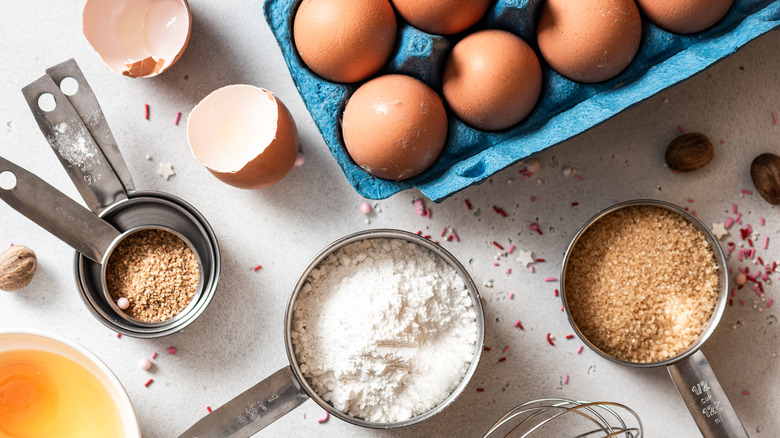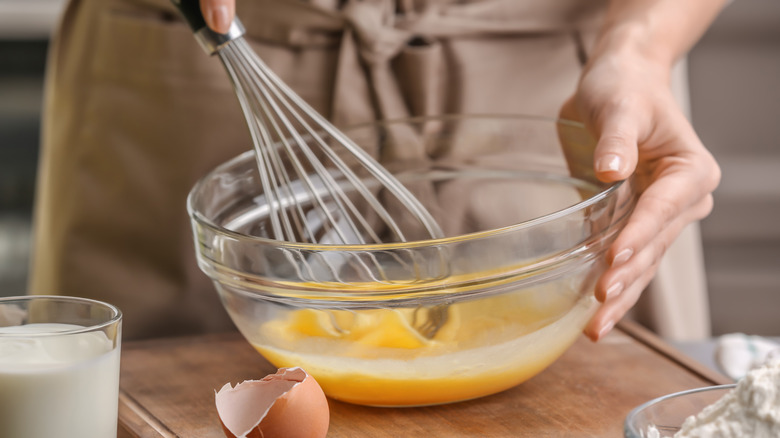How Eggs Can Complicate Scaling Down Recipes
Whether batch cooking chili for meal prep Sunday or preparing a simple salmon dinner for one, it's pretty easy to double or halve a recipe. One pound of ground beef turns into two, and one filet of salmon turns into half. Or perhaps you're cooking for a dinner party and need twelve servings of pasta — once again, it's pretty straightforward to scale up the bolognese.
One caveat to this is when it comes to baking with eggs. Ask any caterer, and they'll tell you baking is notoriously tricky to scale up or down. Baking is a science and chemistry is at play (via Tundra FMP). For 12 servings of flan, you can simply make two flans. But what if you only want two servings for an intimate dinner? Or feel like treating yourself to a homemade slice of red velvet cake but don't need eleven extra pieces lying around?
All is not lost. There are some tricks you can use to make small batches of desserts that call for eggs successful. But what makes them so tricky to scale down in the first place?
How do you halve an egg?
If you've ever cracked open an egg and needed to separate the white and yolk, you surely already know the answer — eggs aren't exactly easy to cut in half, let alone separate.
If the recipe you want to attempt contains an even number of eggs, you're in luck. All you need to do is use half the amount. If the recipe calls for an odd number, it's not that simple. The yolk and white of an egg have different duties when it comes to baking, and both are important for the structure and texture of the results, per Pete and Gerry's. Ensuring you have the correct amount of both parts of the egg in your mixing bowl is crucial. Eyeballing half a yolk or white can be a dangerous game to play in baking.
So what's a baker to do? Don't fret; there is still room for your dessert for one. Per In Katrina's Kitchen, it's as simple as whisking the egg and measuring out half. You can save the remainder for your morning scramble. The same idea goes for any recipe that calls for solely the white or yolk. For extra-complicated or delicate recipes, she suggests grabbing a food scale and measuring the egg whole, and then its weight cracked and scrambled to figure out how much you need. The Washington Post notes that you can also opt for an egg alternative.

